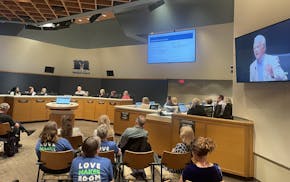ORLANDO – Marc Stumbo has not been in a bank in about two years.
The 32-year-old financial analyst said once his bank, Fairwinds Credit Union, adopted mobile check deposits, there was no need.
"It's just significantly more convenient," he said.
As more consumers than ever bank online or on mobile apps, banks have had to adjust, moving many services online and reducing the number of physical branches.
Some banks have virtual tellers, which make remote bank employees available for extended hours in a day.
Bank of America has introduced ATMs with Teller Assist in 26 markets nationwide.
"We are trying to provide that flexibility and service," spokeswoman Tara Burke said. "It revolves mostly around looking at how customer behaviors have changed."
As they do, banks have bolstered online security, with some introducing biometric, or fingerprint, verification to access apps. Website access requires multiple steps.
A Pew Research Center report said 2013 marked the first time more consumers did their banking online than at a physical branch.
"The traditional bank model will be dramatically different in five years," said Kenneth LaRoe, who founded First Green Bank in Florida. "There will definitely be fewer people coming into the banks."
The Pew study found that the percentage of consumers who bank online grew by about 50 percent from February 2005 to May 2013. In addition, the number of consumers who bank on their mobile devices nearly doubled from May 2011 to July 2013.
For consumers, the ability to finish most transactions online goes beyond check deposits, withdrawals and paying for a latte.
Stumbo, the financial analyst who hasn't entered a bank in two years, said he applied for a car loan and received approval while waiting at the dealer. He says he has gone all-in on mobile payments and mobile banking.
"Nothing has to come out of my pocket, and the clerk never sees a credit card," he said. "It's as good as it gets."

Katy Perry and Rihanna didn't attend the Met Gala. But AI-generated images still fooled fans

Ramstad: Minnetonka council meeting shows compromise on affordable housing is possible

TikTok sues US to block law that could ban the social media platform
Met Gala hauls in record sum of more than $26 million to fund Costume Institute
![Taylor Swift performed Friday, June 23, 2023, at US Bank Stadium in Minneapolis, Minn. ] AARON LAVINSKY • aaron.lavinsky@startribune.com](https://arc.stimg.co/startribunemedia/QPOUYF7QYD7HZR3VESV7W72SAM.jpg?h=91&w=145&fit=crop&bg=999&crop=faces)
